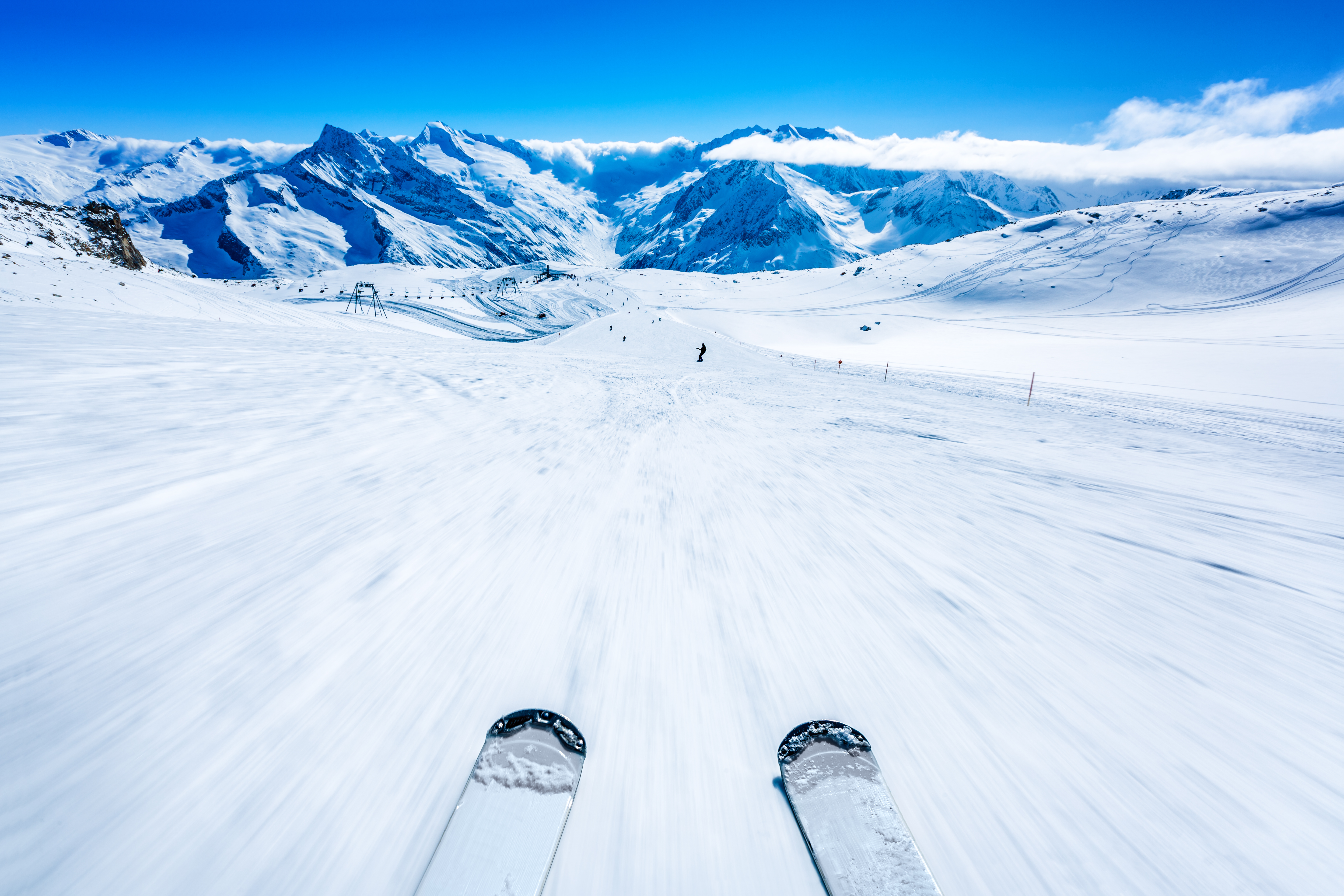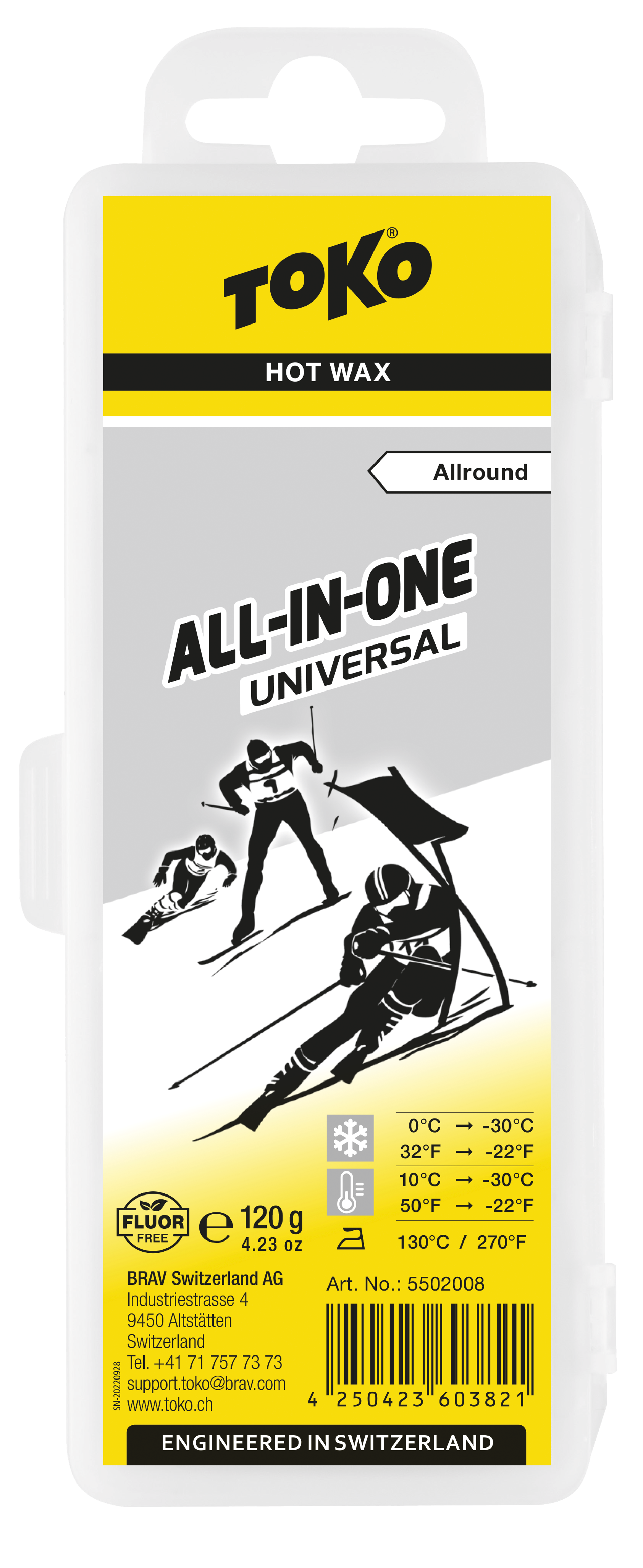
You glide easily and effortlessly along in snowy landscape on a perfectly groomed slope or trail - the dream of every cross-country skier and skier.
Whether you like to run at high speed or glide along comfortably, with well-maintained and waxed skis you spend beautiful hours on the trail or slope.
That's why you should hot wax your skis.
Solid wax particles are melted together to form a wax block. The particles are too large to diffuse directly into the base. Therefore, they must be made liquid (melted) to allow penetration into the base. Perfect glide and high durability of a tread is achieved by working as much wax as possible as deep as possible into the base. From a temperature of 70 °C, measured on the pavement surface, a polyethylene pavement absorbs wax. The closer the covering temperature is to 120 °C, the more wax penetrates the covering and the better it glides. Therefore: Temperature and duration of temperature exposure determine the waxing result!
The more often a ski base is waxed, the more wax it can absorb. New skis should therefore be hot waxed several times before first use. After waxing, let the ski cool down at room temperature for at least 30 minutes and then remove the wax! The longer the wax can cool and harden, the faster the skis / boards.
Quick and easy to even more speed.
But if you want even more speed and the basic preparation is not enough for you, we recommend the High Performance Liquid Sprays as a finish. Simply spray on the desired spray (yellow, red or blue) after brushing out the hot wax and polish with the Polishing Brush - done! Not only is it easy to use, but you can also adjust your choice of wax if conditions change spontaneously. If it's very cold the morning before you want to hit the slopes, you can spray on the blue spray and you're ready to hit the slopes/trails.
As already mentioned, it is not only important to maintain a ski regularly, but the choice of the right wax also affects the performance of your skis. Basically, many parameters influence the choice of the right ski wax. These include snow temperature, humidity and snow type.
These parameters, together with the wax table, can be used to determine the right wax and wax hardness. However, for the amateur skier, the temperature is sufficient for the right choice of wax.
Snow temperature. The safest option is a snow thermometer. The snow thermometer can be used to accurately determine the snow surface temperature. This parameter is very important for wax selection. Measure the snow temperature on the surface (do not stick the thermometer too deep into the snow) and in the shade or body shadow. But of course you can't always measure the snow temperature before waxing your skis. Therefore, the air temperature is also a pragmatic guide for choosing the ideal ski wax. But still remember - the snow temperature is decisive.
Snow type. The snow rating is also an important parameter. New snow, old snow, wet snow or artificial snow can be easily determined by yourself - the more experience, the easier.
Air or the humidity of the air. In high humidity (fog), the snow crystals are softer, the snow is easy to clump. Extremely dry air makes the snow harder, this snow cannot be formed into a snowball even under very high pressure.
Don't forget to take your skis to the sport shop once in a while.
It is important to take your skis to the sports dealer once a year for sharpening. The sporting goods dealer can use stone grinding machines and high quality diamonds to grind almost any texture you want into the surface of the bases. Structured bases have better sliding properties. At low temperatures and fine crystalline snow, fine structures are chosen to reduce friction. At warmer temperatures and coarse-grained or wet snow, linear, coarser structures deflect the water and prevent a suction effect.
Cross-country ski - structure yourself.
To refresh the ground structure on your cross-country ski, you can use the Strucurite Nordic Tool. With this tool you can easily structure the ski surface yourself and get even more performance. However, this structure will be gone the next time you hot wax. Read more about structuring the ski base in the next blog.






![[Translate to english:] TOKO Structurite Nordic Kit](/fileadmin/_processed_/0/d/csm_5540966_structurite_nordic_kit_valig_aperta_78a699e741.jpg)
